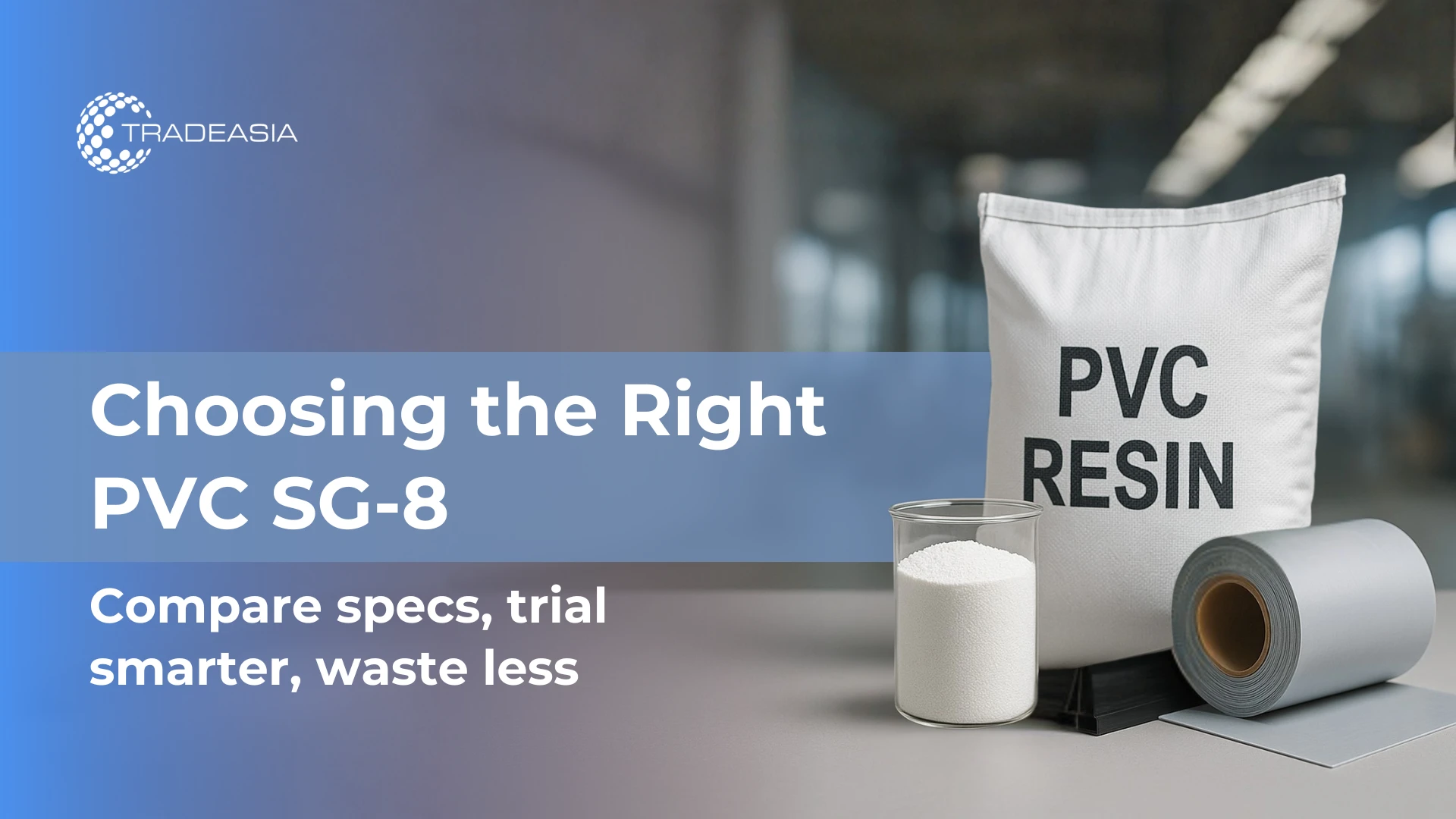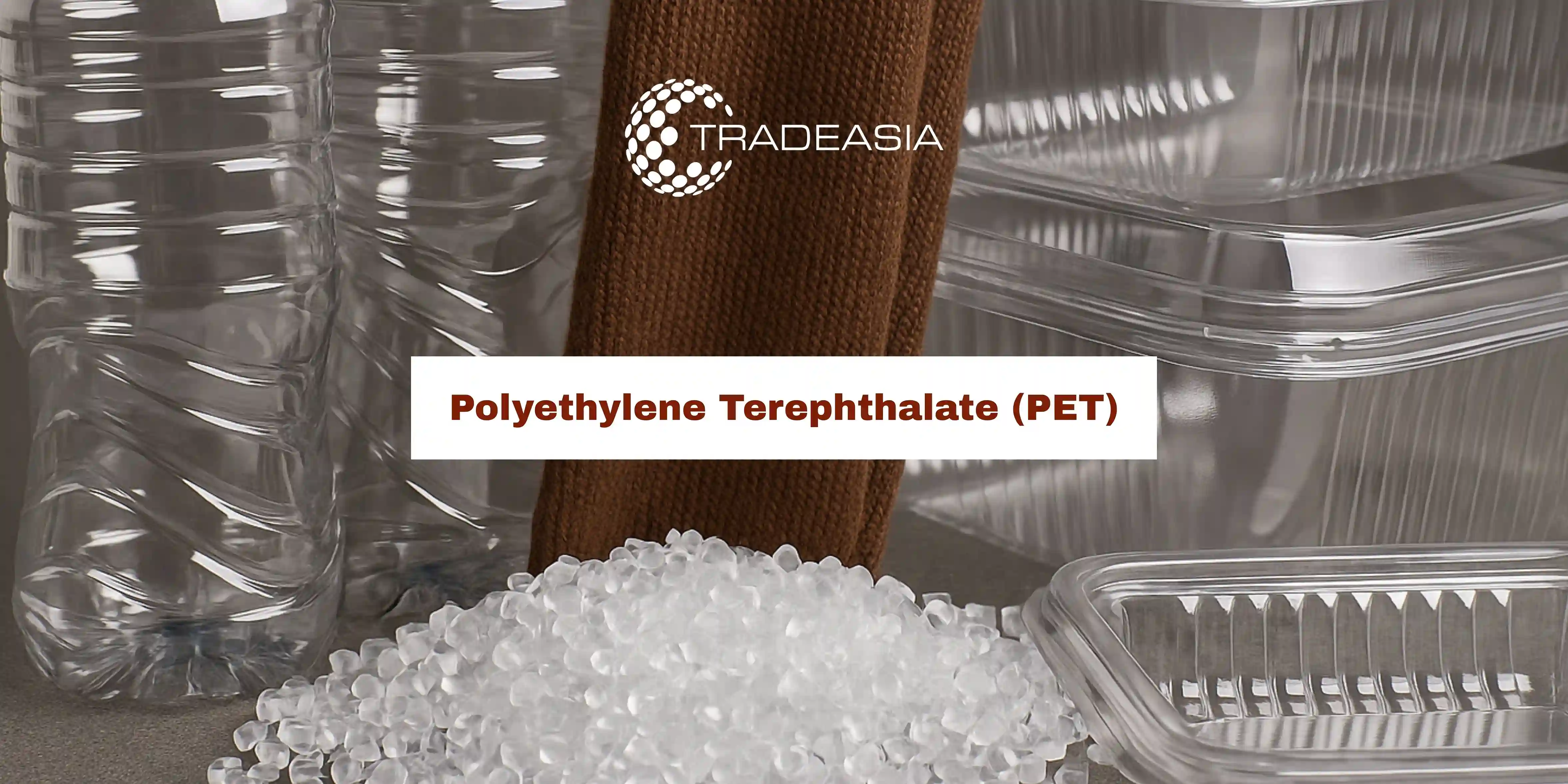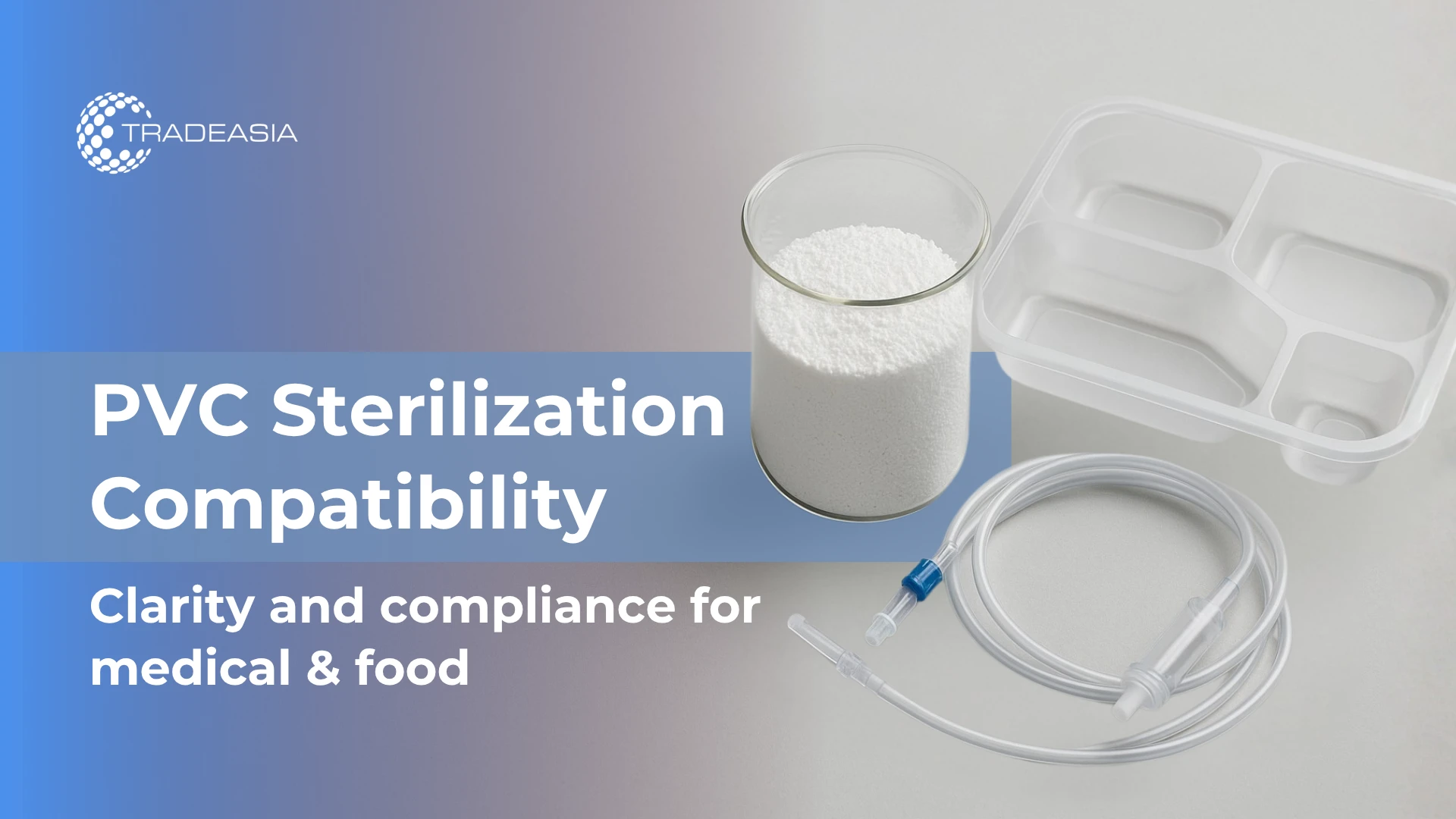Choosing the right PVC SG-8 grade can unlock faster fusion, cleaner surfaces, and lower scrap. This commercial comparison of PVC SG8-19114 vs SG8-2091 gives buyers and engineers a data-driven view of properties, processing behavior, and application fit—so you can shortlist reliable PVC SG8 suppliers with confidence.
1. Introduction: Why SG-8 Grades Matter
SG-8 suspension PVC resins are chosen for their balance of flow and mechanical strength, enabling fast fusion with stable torque on commercial lines. For carbide-based Chinese grades, subtle shifts in particle morphology or volatiles often show up as real differences in scrap rate and surface quality.
In a pvc sg8 products comparison, procurement typically weighs K-value, porosity, bulk density, thermal stability, gel/black-speck counts, and residual volatiles because these drive extrusion rate, gloss, and yellowing. Referencing recognized methods keeps evaluations objective—see ISO and ASTM plastics catalogs for the test families used by industry labs: https://www.iso.org/ and https://www.astm.org/
Specifications can vary among pvc sg8 suppliers, so always validate against current TDS and COA. Live product references: SG8-19114 — https://www.plastradeasia.com/en/polyvinyl-chloride-sg8-19114-carbide-based-sg-8-china ; SG8-2091 — https://www.plastradeasia.com/en/polyvinyl-chloride-sg8-2091-carbide-based-sg-8-china
2. Grade Overview: PVC SG8-19114 vs SG8-2091
SG8-19114 is positioned as a stable, mid-viscosity SG-8 grade for extrusion and calendering where predictable fusion, low gels, and consistent surface finish are priorities. Buyers often shortlist it for rigid profiles and sheets that demand cosmetic consistency (see product page above).
SG8-2091 targets the same SG-8 envelope with attention to bulk density and particle uniformity to improve feeder stability at high throughputs. Some converters report slightly quicker melt development on certain screw designs, which can translate to RPM or temperature savings during trials.
Both grades are carbide-based SG-8 resins. Practical differentiation comes from plant-level controls—particle size distribution, porosity, impurity control, and supplier recommendations for stabilizer systems—so request fresh COAs for every lot and benchmark to your in-house specs.
3. Property Comparison: K-Value, Viscosity & Thermal Profile
K-value & viscosity. SG-8 grades typically center around K≈66–68 (indicative), favoring faster fusion than higher-K resins. Small K shifts can influence melt pressure and die swell; confirm via intrinsic viscosity and rheology per ISO/ASTM practices (catalogs: https://www.iso.org/ ; https://www.astm.org/).
Porosity & plasticizer uptake. For semi-rigid/flexible lines or plastisol work, porosity affects absorption and deaeration. An open pore structure may shorten mixing and improve film clarity; verify with standard soak/absorption and microscopy protocols.
Thermal stability & volatiles. Heat stability sets the safe processing window before dehydrochlorination and discoloration. Monitor color drift (APHA or Lab*) and reference appropriate material methods (e.g., ASTM families used for PVC characterization): https://www.astm.org/
Gels & cleanliness. Gel counts correlate with surface defects and haze. Combine incoming resin screening with inline filtration; align acceptance limits in supplier quality agreements and retain method references (ISO 1163 family for PVC compounds overview: https://www.iso.org/ ).
4. Processing Performance: Extrusion, Injection & Plastisol Use
Extrusion (pipes/profiles). On rigid lines, SG8-19114 and SG8-2091 should run in similar temperature windows; if 2091 fuses marginally faster on your screw/barrel set, you may trim RPM or barrel zones—verify with torque and melt-temp logging during factory trials.
Calendering/sheets. Surface smoothness depends on resin cleanliness and thermal control. If 19114 yields fewer die-lines in your clear/white recipes, document this in the COA trail; nevertheless, stabilizer and lubricant packages will dominate gloss and color hold.
Injection molding. Cycle time hinges on melt temperature, back pressure, and mold temperature. SG-8 flow helps reduce gate freeze and warpage risk; tune holding pressure and cooling for dimensional stability.
Plastisol/flexible PVC. Porosity influences plasticizer absorption and gelation curves. Capture plastisol viscosity vs time/temperature and film clarity for both grades, so the preferred resin is backed by quantitative evidence.
5. Application Fit: Pipes, Profiles, Cables & Films
Pipes & fittings. Choose the grade that pairs best with your stabilizer system and die geometry to hit pressure/impact targets. ASTM D1785 provides shared terminology for pipe dimensions and performance: https://www.astm.org/
Window & construction profiles. Uniform fusion and low gels are essential for lamination yield and surface energy control. Trial both grades against your corona/treatment targets to minimize energy input and defects.
Cables & wire. For insulation and sheathing (dry-blend or plastisol), evaluate cold bend, volume resistivity, and plate-out over long runs. Resin cleanliness plus stabilizer harmony typically sets the ceiling for productivity.
Films & sheets. Clear/printable films benefit from narrow particle distributions and low volatiles. Test ink adhesion with your converters and record results in lot documentation for downstream customers.
6. Quality, Compliance & Documentation
Always collect TDS, COA, and change-control history; centralize files and cross-check against our Download Center.
Anchor your testing to recognized methods to enhance trust in tenders and audits. For plastics characterization and PVC materials references, consult the ISO and ASTM portals: https://www.iso.org/standard/70417.html#lifecycle ; https://www.astm.org/d2396-20.html
Maintain full lot traceability from resin to finished goods and record rework/regrind ratios. This reduces dispute time and streamlines customer qualifications.
For regulated sectors (e.g., building, food-adjacent components), ensure additive packages meet local rules and keep supplier declarations on file for rapid submissions.
7. Procurement & Supply Reliability
When short-listing pvc sg8 suppliers, assess installed capacity, backup plants, and logistics corridors; dual-qualify both SG8-19114 and SG8-2091 where possible to hedge risk.
Request historical QC ranges (K-value, bulk density, volatiles) to judge lot-to-lot consistency; tighter bands cut changeover waste and stabilize quality KPIs.
Lock commercial terms with clear COA acceptance criteria, remediation pathways for off-specs, and a fast-track replacement plan.
Check real-time stock, lead times, and documentation:
SG8-19114 — https://www.plastradeasia.com/en/polyvinyl-chloride-sg8-19114-carbide-based-sg-8-china
SG8-2091 — https://www.plastradeasia.com/en/polyvinyl-chloride-sg8-2091-carbide-based-sg-8-china
8. Conclusion & Next Steps
Both SG8-19114 and SG8-2091 deliver the core SG-8 value proposition: efficient fusion and broad processability. The better choice depends on your screw/barrel set-up, stabilizer package, and surface-finish demands.
Make decisions on data—lab and plant trials grounded in ISO/ASTM methods, with porosity, gel counts, and volatility documented in COAs.
For downloadable templates and typical set-points, use our Download Center: Download Center at Plastradeasia
Ready to request pricing, samples, or multi-site supply plans? Contact us: Go to our Contact Form!




Leave a Comment